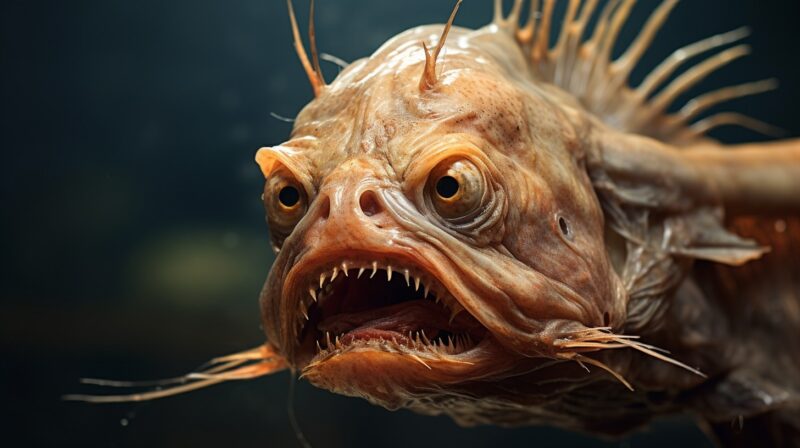Ever since I was a child, oceans have been a mystery to me. From their depths to the animals that live there, everything seems so interesting.
But let’s be honest, not every fish is going to win a beauty contest. In fact, some of them might just win the title for the world’s ugliest!
In this blog post, I’m diving deep (pun intended) into the world of the not-so-pretty fish. I’ve rounded up 17 of the most peculiar, bizarre, and yes, downright ugly fish that our oceans have to offer.
Each of these fish, regardless of their looks, has a unique story and a role in the marine ecosystem. So, grab a cup of tea, get comfy, and join me on this underwater journey.
17. Sculpin
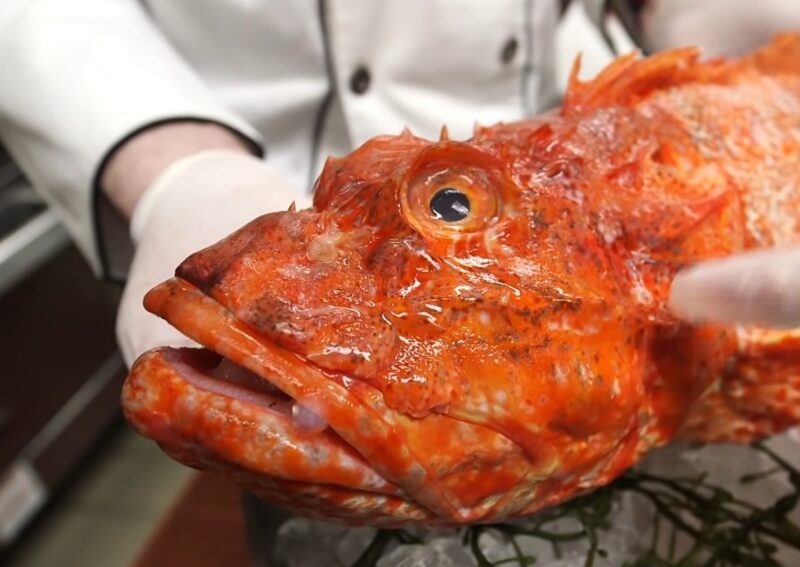
These fish, abundant in Nova Scotia, are characterized by their spiny exteriors, which can make them a challenge for anglers to handle. Their unique body structure, covered in spines, serves as a defense mechanism against predators.
Unlike most fish species, sculpins lack a swim bladder, the organ responsible for maintaining buoyancy. Instead, they utilize their broad pectoral fins to glide gracefully through the water, often staying close to the bottom.
16. Frilled Shark
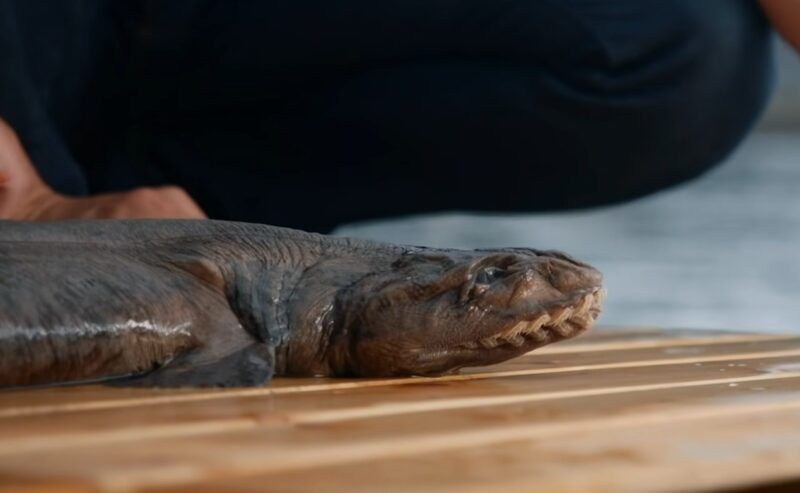
Its eel-like appearance, combined with its deep-sea habitat, has made it a subject of intrigue and study. This fish has an elongated body that allows it to swiftly move through the water, capturing prey with a sudden lunge.
The frilled shark’s mouth is lined with approximately 300 trident-shaped teeth, spread across 25 rows. This impressive dental arrangement ensures that any prey caught in its jaws has little chance of escape.
15. Red-lipped Batfish
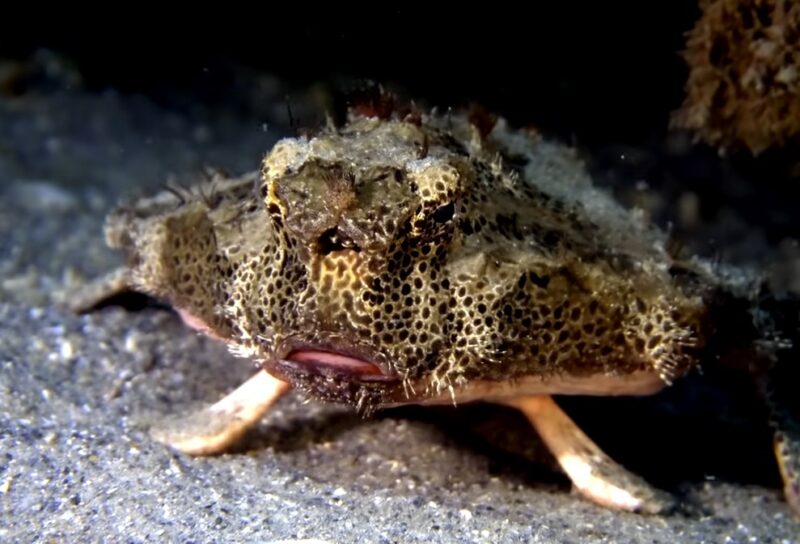
Native to the waters surrounding the Galapagos Islands, the red-lipped batfish is a peculiar sight. With its bright red lips and unique body structure, it appears more suited for a walk in the park than a swim in the ocean. This bottom-dwelling fish has evolved to “walk” on the ocean floor using its modified pectoral fins.
The red-lipped batfish has a specialized dorsal fin known as an illicium. This fin acts as a lure, attracting curious prey close enough for the batfish to snatch.
14. Spotted Handfish
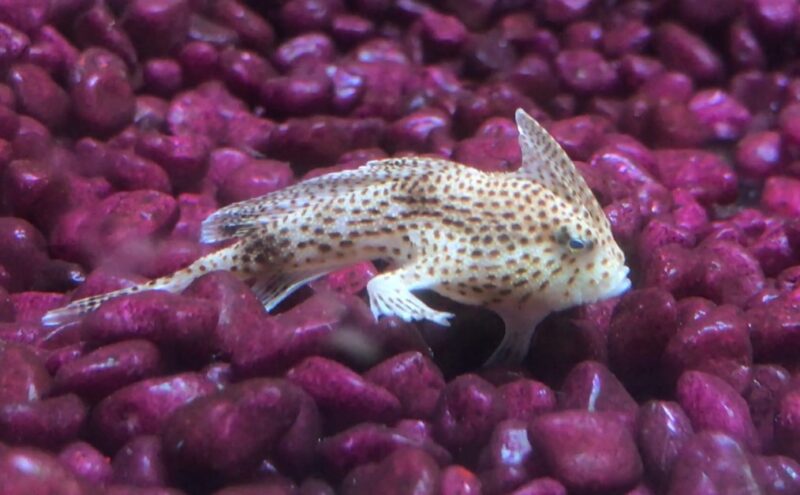
The spotted handfish, native to the waters of Australia, is a rare and endangered species. Its name derives from its hand-like fins, which it uses to “walk” along the ocean floor. With a face that seems to be perpetually frowning and a body adorned with spots, it’s a sight to behold.
Conservation efforts are underway to protect the spotted handfish. One of the primary threats to its survival is the Northern Pacific seastar, an invasive species that feeds on the handfish’s eggs.
To combat this, divers often manually remove seastars from handfish breeding areas.
13. Sunfish
The sunfish, or mola mola, is a true giant of the ocean. With a flat, round body and rough, textured skin, it’s often mistaken for a large floating disc when seen from the surface. These gentle giants are known to bask in the sun near the ocean’s surface, which is how they got their name.
The sunfish’s reproductive capabilities are staggering. A single female sunfish can produce up to 300 million eggs at once, more than any other known vertebrate. These eggs are released into the water, where they float freely, waiting to be fertilized.
12. Goblin Shark
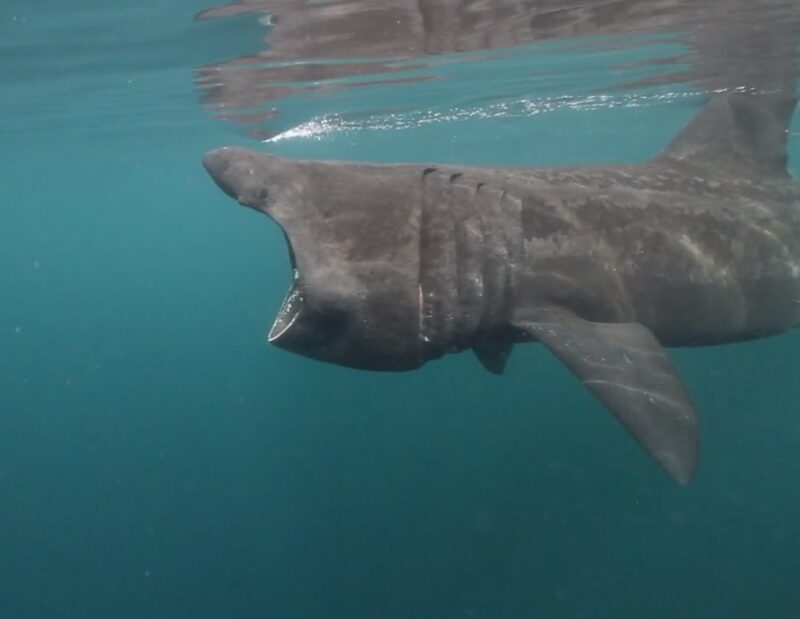
Their jaws, which can protrude dramatically, are lined with sharp, nail-like teeth perfect for catching slippery prey.
The goblin shark’s ability to rapidly extend its jaw is due to a unique set of ligaments. When capturing prey, these ligaments release, allowing the jaw to shoot forward up to 3 inches, snapping up anything in its path.
11. Sea Pig
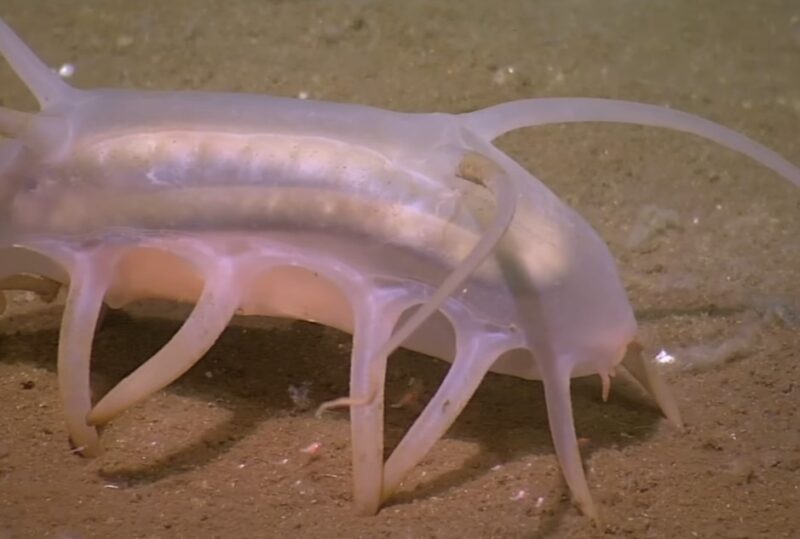
Sea pigs have fascinating social behavior. They often congregate in large groups on the ocean floor, sometimes numbering in the hundreds. This behavior is believed to be a survival strategy, where the presence of many individuals increases the chances of detritus falling in their vicinity.
10. Wolffish
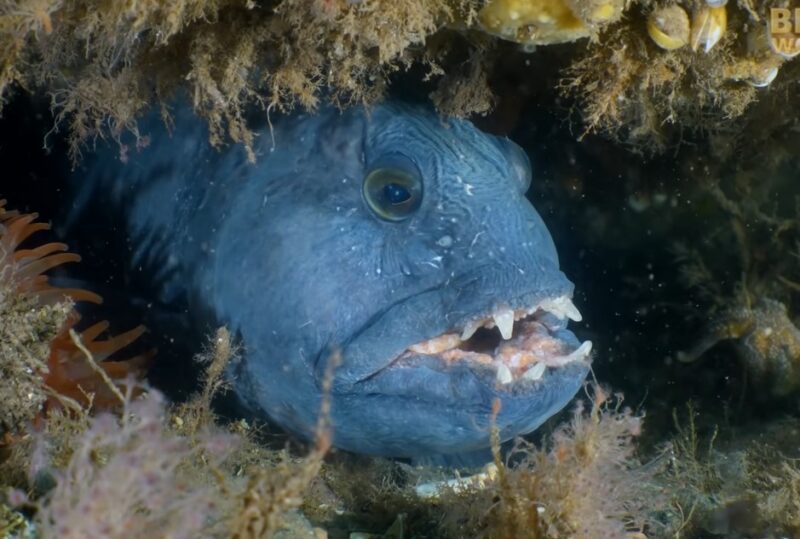
The wolffish, with its fierce appearance and powerful jaws, is a force to be reckoned with in the cold waters of the Atlantic and Pacific oceans. Their strong teeth, which can crush shells and hard crustaceans, are a testament to their predatory nature.
To survive in the frigid waters of their habitat, wolffish have evolved a unique adaptation. They produce a natural antifreeze protein that prevents their blood from freezing, allowing them to thrive in cold environments.
9. Frogfish
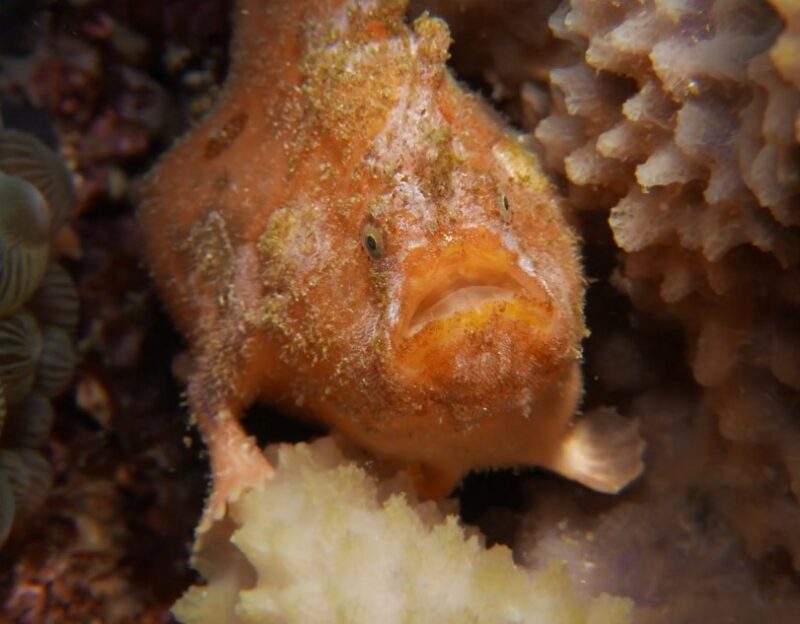
They are ambush predators, lying in wait for unsuspecting prey to come close.
The frogfish’s hunting technique is truly remarkable. They can expand their mouths to swallow prey up to twice their size, allowing them to feast on a wide variety of marine creatures.
8. Monkfish

The monkfish has a modified dorsal spine that acts as a lure. This “fishing rod” has a fleshy tip that the monkfish can wiggle to mimic a worm or small fish, attracting prey right into its mouth.
7. Viperfish
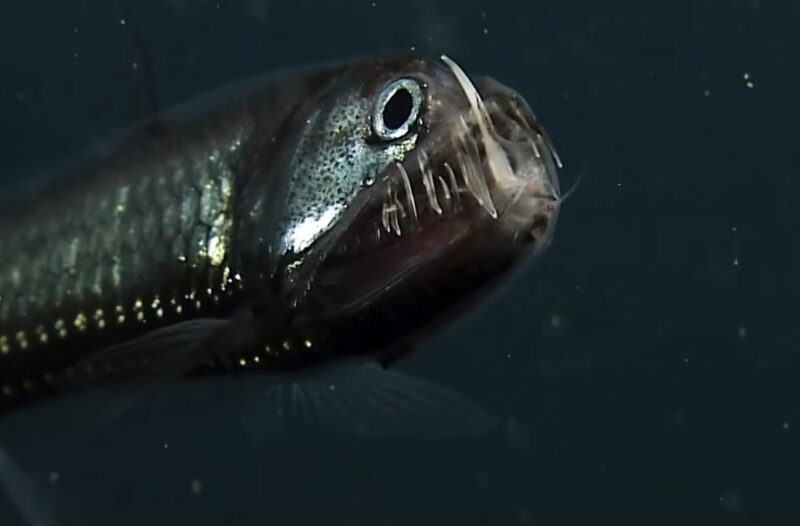
Their large eyes are adapted to detect the faintest glimmers of light in the abyss. The long, sharp teeth of the viperfish are so big; that they don’t fit inside its mouth and instead curve back towards its eyes.
Viperfish have several bioluminescent photophores on their bodies. These light-producing organs are strategically placed to attract prey. By flashing these lights in the pitch-black depths of the ocean, the viperfish lures curious prey close enough to be snatched up in its formidable jaws.
6. Blobfish
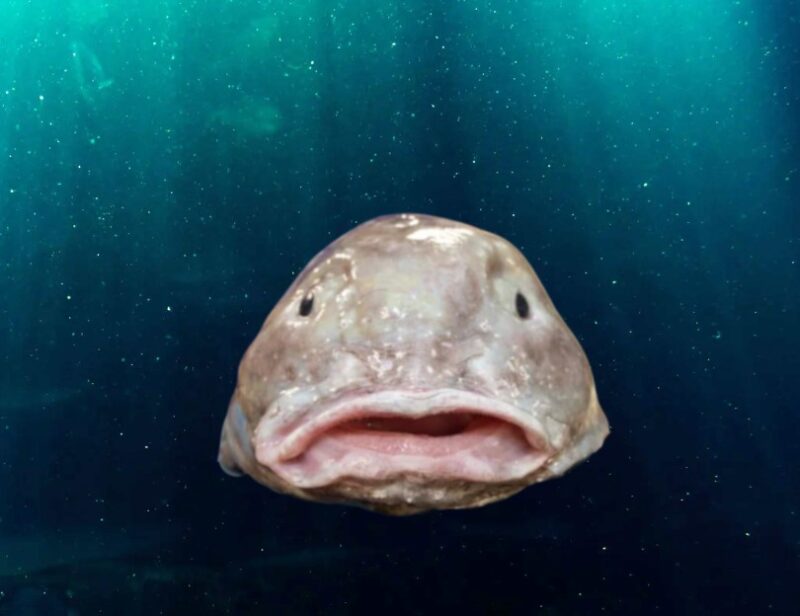
The blobfish, native to the deep waters surrounding Australia and New Zealand, has gained internet fame due to its unusual, almost human-like face when brought to the surface. This deep-sea dweller lives at depths where the pressure is several times higher than at sea level. Its soft, gelatinous body allows it to survive in these extreme conditions.
The blobfish’s unique, gelatinous structure is perfectly adapted to its environment.
5. Toadfish
Toadfish, found in various marine environments, are named for their toad-like appearance. With a broad, flattened head and a wide mouth, these fish are often found hiding in the sand or mud, waiting to ambush their prey.
4. Vampire Fish
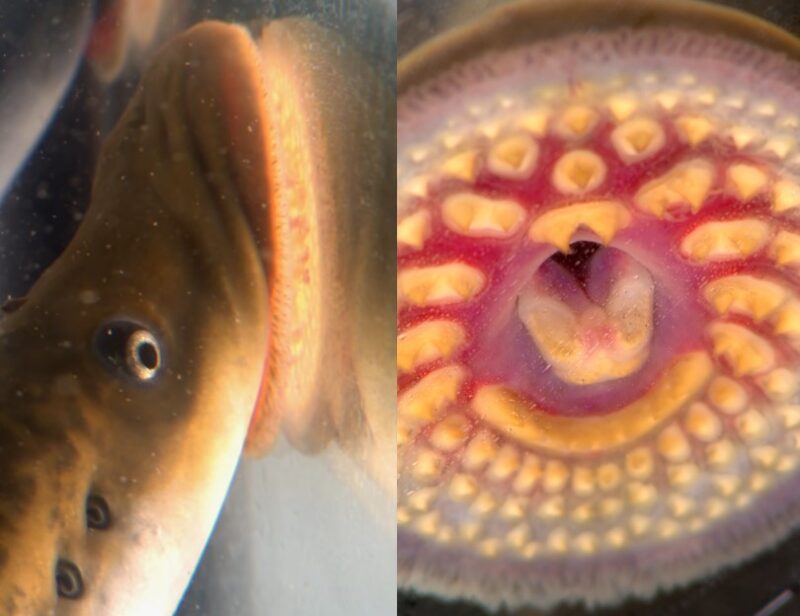
The vampire fish, or payara, is a predatory fish native to the Amazon Basin. With a streamlined body and large, sharp fangs, this fish is a formidable predator in its environment.
The vampire fish’s two long fangs are so large that they have slots in their upper jaw to accommodate them when the mouth is closed. These fangs are used to impale smaller fish, making them an effective predator in their freshwater habitat.
3. Deep Sea Anglerfish
The deep-sea anglerfish’s reproductive method is truly unique. The much smaller male anglerfish attaches itself to a female, eventually fusing with her body. Over time, the male becomes a simple sperm-producing appendage, relying on the female for sustenance.
2. Whitemargin Stargazer
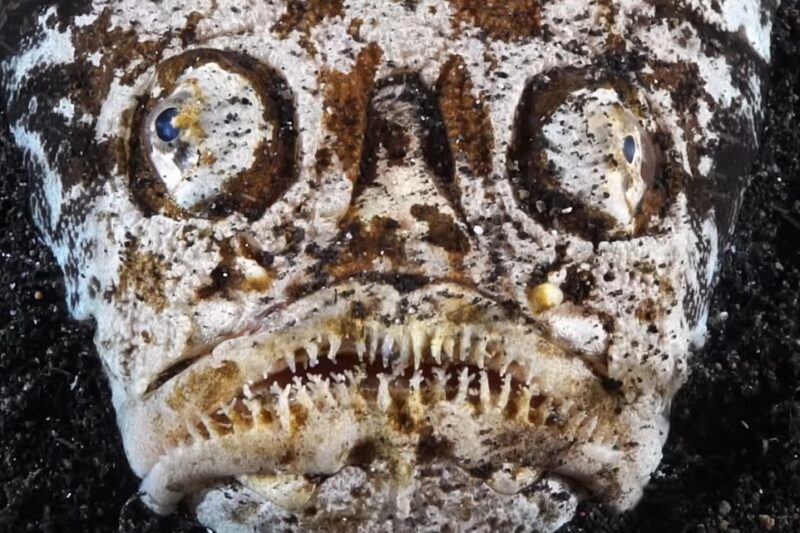
Whitemargin Stargazers have a unique hunting technique. They bury themselves in the sand, leaving only their eyes and mouths exposed. When an unsuspecting prey swims by, they leap out of the sand to capture it.
1. Blob Sculpin
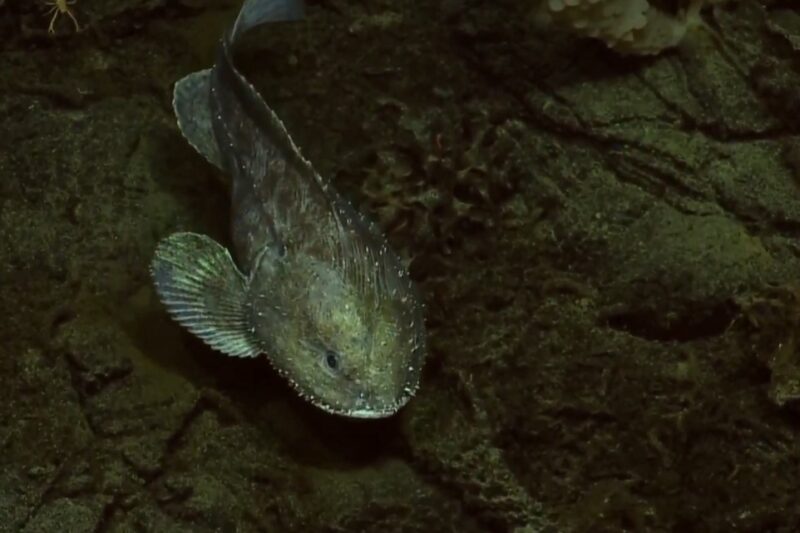
The blob sculpin, found in the deep waters of the North Pacific, has a soft, gelatinous body that gives it its name. Despite its somewhat comical appearance, the blob sculpin plays a crucial role in its ecosystem.
Blob sculpins exhibit a high level of parental care. The male guards the nest, ensuring the safety of the eggs. Once the eggs hatch, the young sculpins are left to fend for themselves in the vast expanse of the deep sea.
FAQ
The reasons why these fish are considered ugly vary. Some of them have unusual or deformed features, while others have a slimy or gelatinous appearance. Still others have sharp teeth or a menacing appearance.
Final Words
Well, folks, that’s the ugly truth.
While these fish might not grace the covers of marine magazines, try to see their beauty in their uniqueness. Every bump, spine, and odd shape tells a story of survival and adaptation. So, the next time you stumble upon one of these unsung wonders, pause and marvel.
Related Posts:
- 15 Ugliest Animals in The World - Pictures,…
- White-Lipped Tree Frog - Pictures, Videos and…
- 9 Deserts in Africa: Pics, Maps, Interesting Facts & More
- 10 Biggest Jungle Animals: Iconic Species Facts & Pics
- 15 Tips for Shooting & Editing Drone Videos of Nature
- African Animals - Interesting Facts and Pictures


